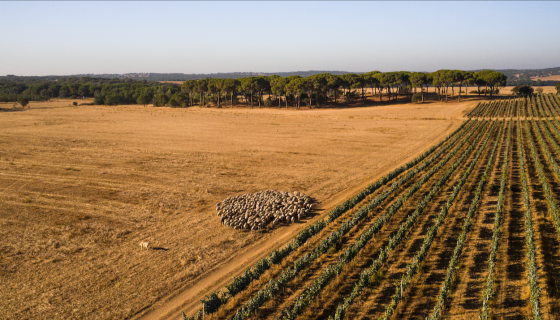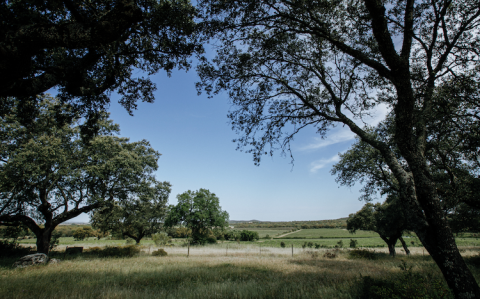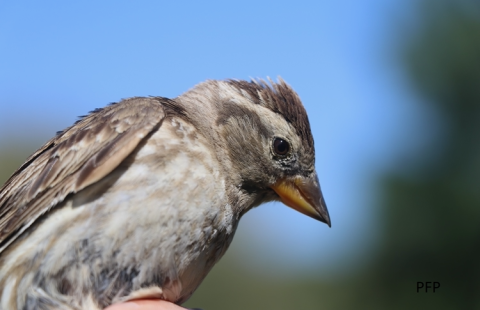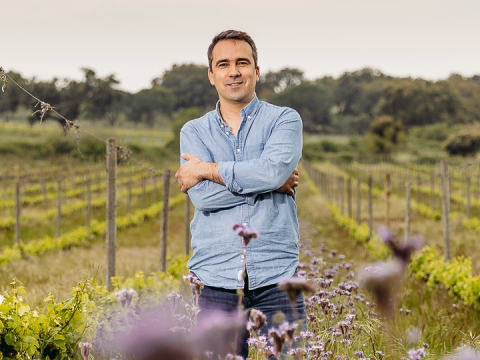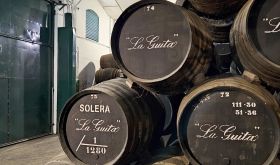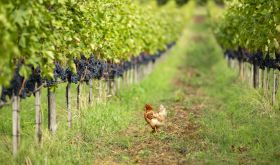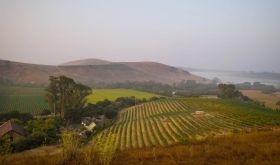From €7.99, £11.95, $14.99, 242.65 Brazilian reais for the white 2021
From €9.50, £11.50, $15.99 for the red 2020
By the time I arrived at the Tapada de Coelheiros, a property just north of the town of Évora and rooted in Portugal’s Alentejo region since 1467, it was almost dusk but it was still possible to see the beautiful, gnarled cork forests, the walnut orchard and the olive grove that are as important a part of the 800-ha (2,000-acre) estate as the 50 ha (124 acres) of vineyards.
Deer roam freely on one part of the estate and flocks of sheep – there are 1,300 of them in all – are moved around the estate to keep the forest floor clean, to chomp through the grass and cover crops between the vine rows at certain times in the growing season, usually after harvest and up to budbreak, and to provide fertiliser to the vineyard. There are precise metrics for the number of sheep per hectare and the duration of grazing so that the sheep do not compact the soil. (For a related discussion, see Sam’s recent article on grazing-based viticulture.)
Coelheiros was the second producer to achieve certification in the Wines of Alentejo Sustainability Programme (WASP), the first such scheme in Portugal, officially launched in May last year. This encompasses all aspects of sustainability: environmental, social and economic.
The current owners of the Tapada de Coelheiros, Alberto Weisser and his wife Karin Schmalzigaug, and the team here are putting a great deal of effort into restoring a balanced ecosystem in which, for example, bats and birds help control insect pests without the use of pesticides – bats are particularly effective predators of the sap-sucking green leafhoppers that can damage the vines – and cover crops make the soil more permeable to rain, allowing them to dry-farm 60% of the vines. They have received a €1-million subsidy from the EU to restore the creeks on the estate, which will create ‘ecological corridors’ that provide a habitat for many local flora and fauna.
Sustainability and biodiversity in themselves do not make a wine of the week. But this pair of wines, the Coelheiros red 2020 and the Coelheiros white 2021, stand out for their highly desirable combination of quality, pleasure quotient and value for money as well as for their environmental credentials. My tasting note on each one includes the relatively rare annotation VGV (very good value).
The white is a blend of 80% Arinto and 20% Antão Vaz. The grapes are hand-harvested and the wine is fermented without the addition of cultured yeast, half in 500-litre used barrels and big oak foudres, the other half in stainless-steel tanks. This, and the blend of varieties, brings both aromatic purity and depth of flavour, not to mention a long, lingering finish.
Six months on the lees after fermentation has added texture and body to a wine that is vibrant with citrus fruit and has the incipient complexity that will increase with another six months in the bottle – a slight cedary character that I associate with Antão Vaz and that was more obvious on the 2020 white when I tasted it at the winery last November.
Winemaker Luis Patrão (below), who, with his father and his wife Eduarda Dias, also runs Vadio, their family estate further north in Bairrada, believes that Arinto, a variety planted in many of Portugal’s wine regions, has great potential here, and it certainly brings balancing freshness to the ripeness of the region and the broader, less fruity flavour of the local Antão Vaz. The alcohol is 13%.
The white is fresh and lively enough to be drunk on its own but it is also substantial enough to be versatile at the table. The red, on the other hand, I would definitely want to drink with food because it is still quite young and the tannins are on the firm side even if they are beautifully smooth. It’s a 50/50 blend of Touriga Nacional and Touriga Franca, both varieties more commonly associated with the Douro. The varieties are spontaneously fermented in tank and spend one year in 500-litre barrels and foudres.
The wine is very deeply coloured, as you would expect from Touriga Nacional. Black-fruit aromas explode out of the glass along with the merest hint of violets. The fruit is perfectly ripe so that it tastes alive: rich and deep and yet very fresh. The oak is barely tasteable but I suspect it has smoothed the tannins. Like the white, this punches above its weight, concentrated but not at all heavy. The 14.5% alcohol is fully integrated.
Patrão particularly likes Touriga Franca for this blend. Not only does it have good drought resistance but, he says, ‘it tends to have a fruitier, juicier profile and less rustic tannins’ than Alicante Bouschet. They have top-grafted some of their Cabernet Sauvignon vines (planted in the 1980s when international varieties were all the rage) with Touriga Franca. This is the first vintage of the red in which they have been able to replace Alicante Bouschet in the blend.
If you’d like to know more about the story of the estate, it is briefly but well recounted on the history page of the Coelheiros website.
The wines are currently available only from The Wine Society in the UK, though Patrão tells me they are in discussions to get wider distribution to the on- and off-trade. Their US importer is Grape2Glass, who note that the wines are available in CA, NJ, NY, IL, VA, MA and FL. Contact infog2glass@gmail.com for more information. Coelheiros also export to Germany, France, the Netherlands, Denmark, China, Macau and Angola.
I will be writing more about my trip to the Alentejo, including the Amphora Day tasting, in due course. Meanwhile you can find reviews of nearly 1,000 wines from the Alentejo, back to the 1990s, in our tasting notes database. All photos are courtesy of Coelheiros unless otherwise stated.

